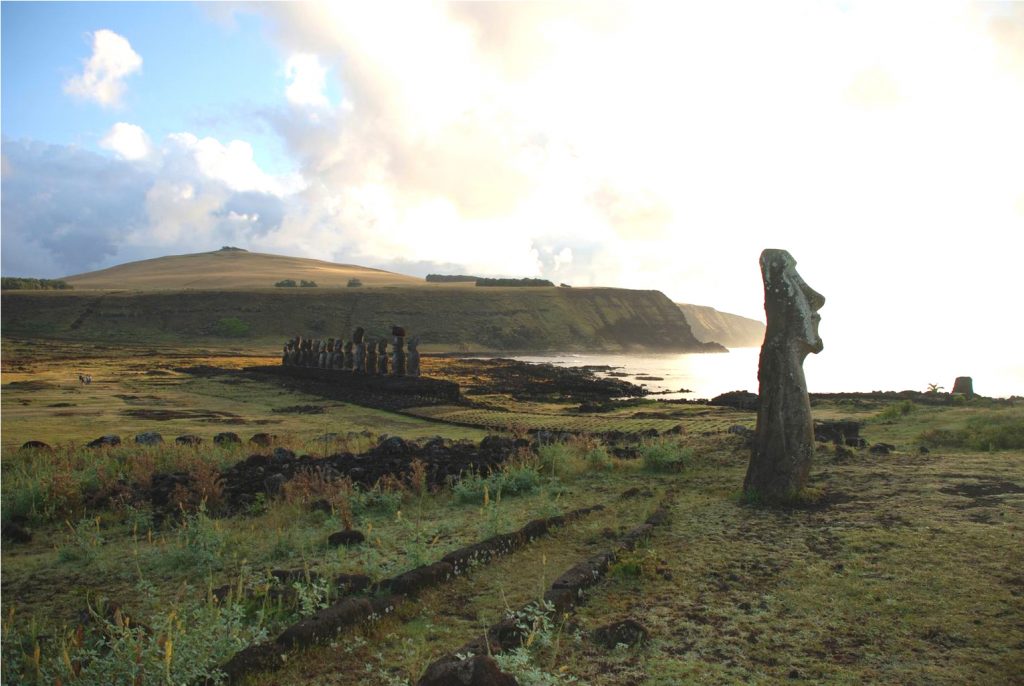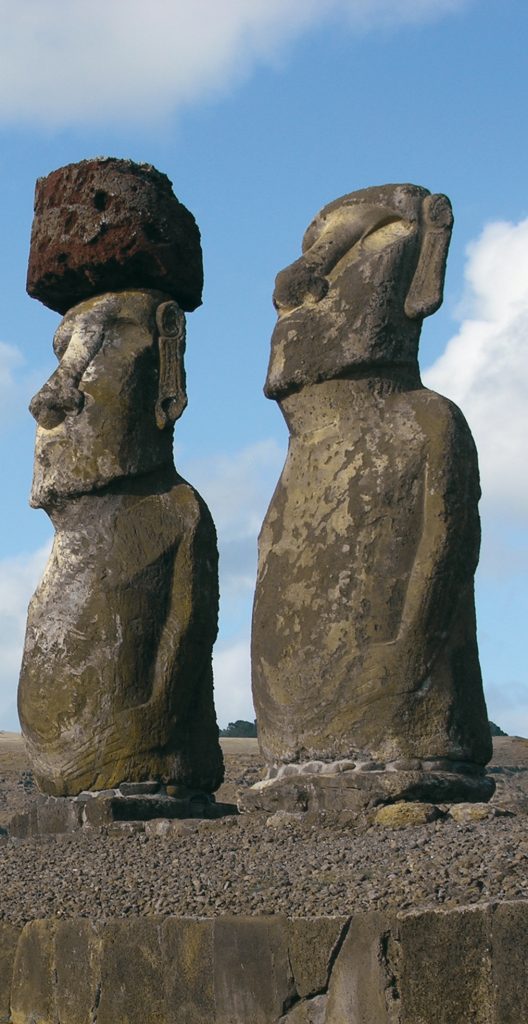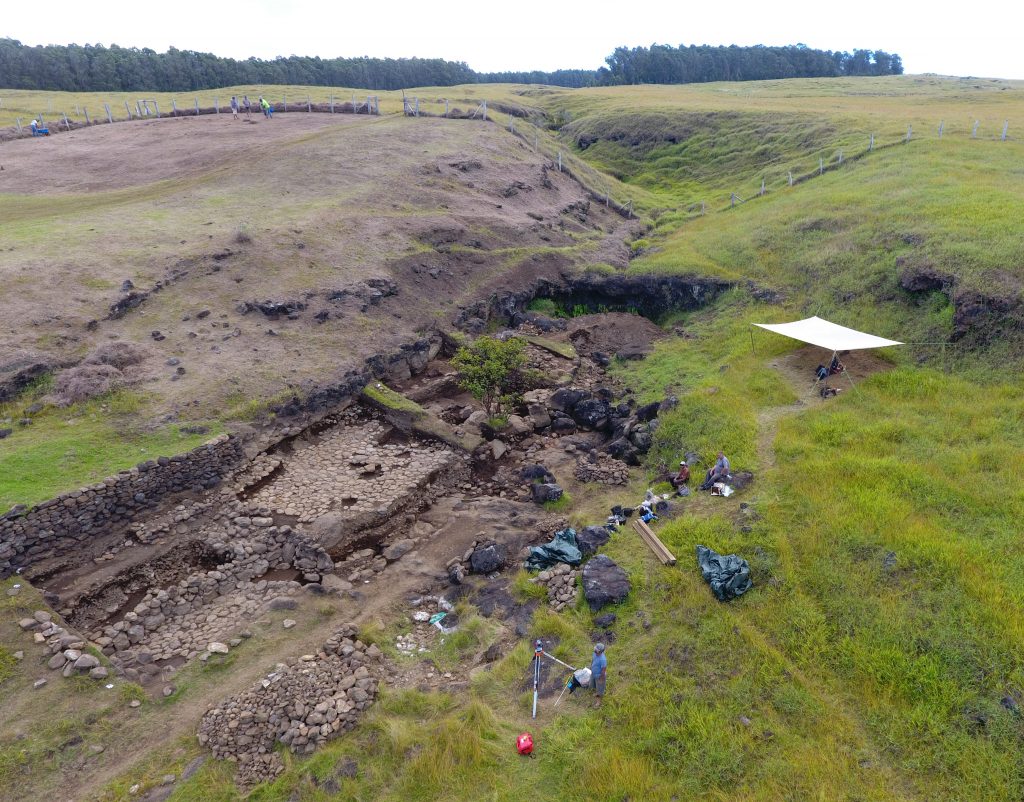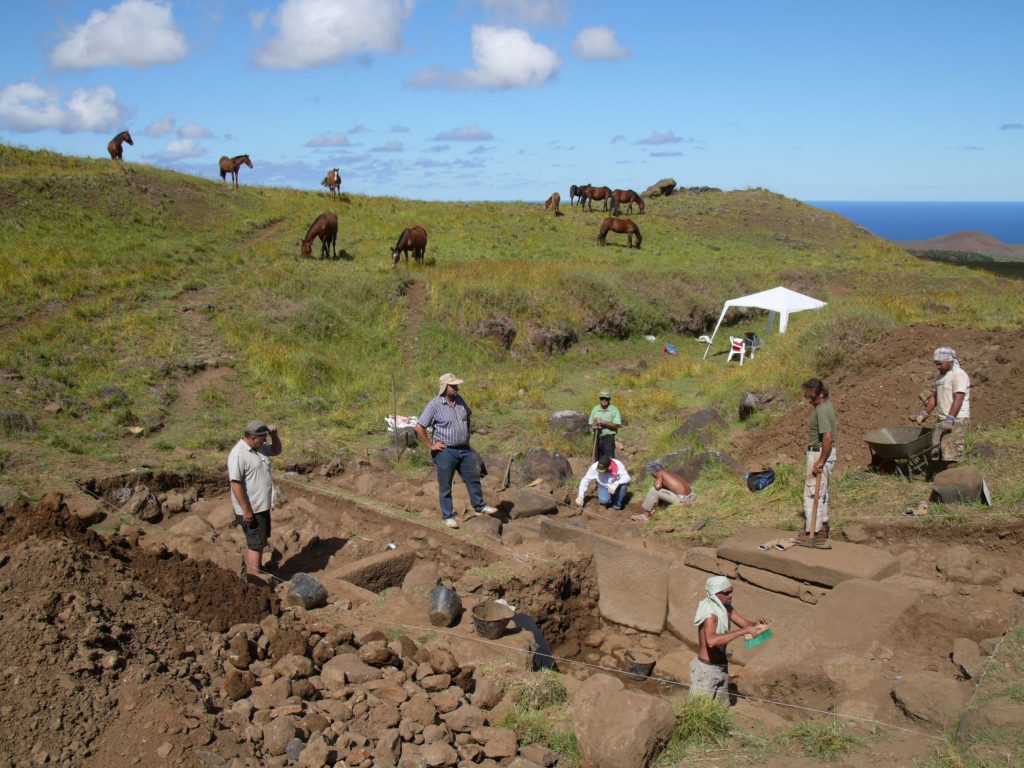Today the DAI’s projects reach far beyond Europe and classical antiquity – as far afield as the Pacific Ocean.

Easter Island lies totally isolated in the South Pacific, a good 3,800 kilometres from the South American coast. Around 1,000 AD the thus far untouched island was settled by the Rapa Nui, a Polynesian people. Within a very short time they over-exploited the island’s natural resources. Since 2007 the Bonn-based commission of the DAI has joined in the investigation of the Rapa Nui culture, the remains of which are today UNESCO World Cultural Heritage. A main focus of its research is how the islanders used water, a scarce resource. Recently a water and fertility sanctuary was discovered.

Two colossal tuff figures of the Rapa Nui culture on Easter Island (Photo: B. Vogt, DAI KAAK) 
Drone photograph of the north section of the site, with waterfall and paved monumental terraces (Photo: C. Hartl-Reiter, DAI KAAK) 
Ava Ranga Uka A Toroke Hau, water basin and ritual platform (c.1500 AD) (Photo: DAI KAAK)